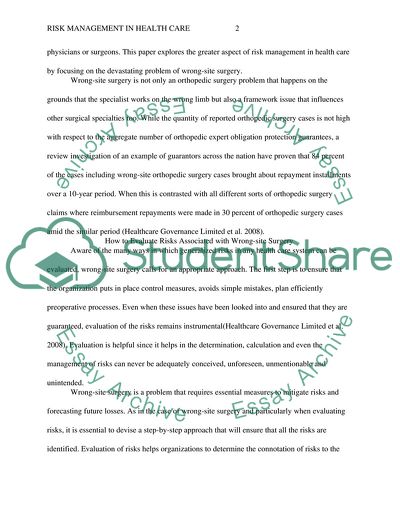Cite this document
(Wrong Site Surgeries Essay Example | Topics and Well Written Essays - 1000 words, n.d.)
Wrong Site Surgeries Essay Example | Topics and Well Written Essays - 1000 words. https://studentshare.org/medical-science/1843186-risk-management-in-health-care
Wrong Site Surgeries Essay Example | Topics and Well Written Essays - 1000 words. https://studentshare.org/medical-science/1843186-risk-management-in-health-care
(Wrong Site Surgeries Essay Example | Topics and Well Written Essays - 1000 Words)
Wrong Site Surgeries Essay Example | Topics and Well Written Essays - 1000 Words. https://studentshare.org/medical-science/1843186-risk-management-in-health-care.
Wrong Site Surgeries Essay Example | Topics and Well Written Essays - 1000 Words. https://studentshare.org/medical-science/1843186-risk-management-in-health-care.
“Wrong Site Surgeries Essay Example | Topics and Well Written Essays - 1000 Words”. https://studentshare.org/medical-science/1843186-risk-management-in-health-care.


